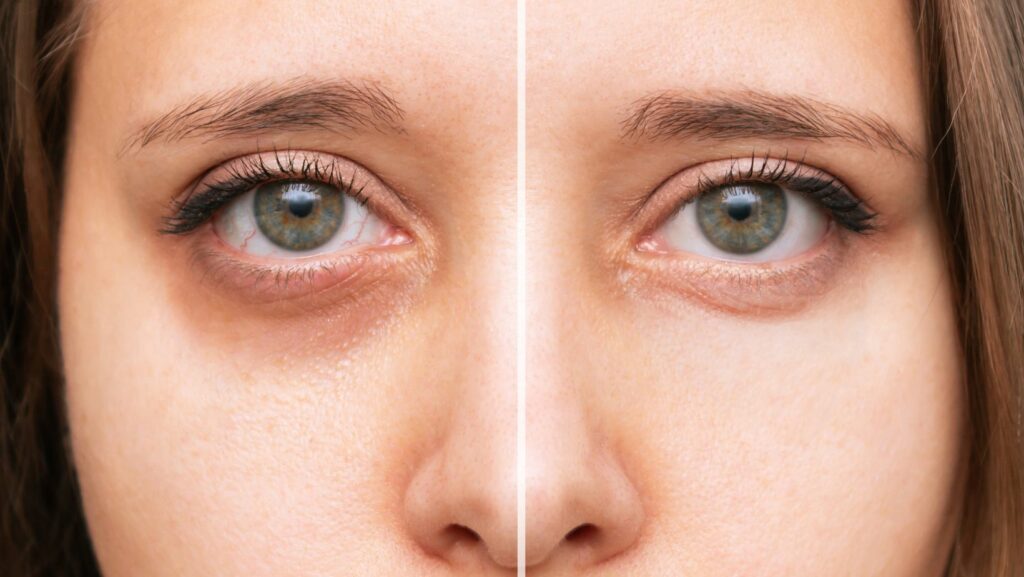![]()
![]() Cosmetic Procedures for Dark Circles
Cosmetic Procedures for Dark Circles
Advancements in cosmetic technology have made it easier than ever to address this common issue. Procedures like laser therapy, fillers, and chemical peels target the root causes of dark circles, such as pigmentation, volume loss, and vascular issues. Each option comes with its own set of benefits and considerations, making it crucial for individuals to explore what suits their needs best. Dark circles appear as discoloration or shadows under the eyes. Several factors contribute, including genetics, lifestyle, and skin structure. Genetics play a significant role in individuals having a familial predisposition to pigmentation or thinner skin in the under-eye area.
Lifestyle factors like lack of sleep, stress, and poor diet further exacerbate dark circles. Sleep deprivation causes blood vessels under the eyes to dilate, increasing visibility. Stress leads to a reduction of blood flow to the face, causing an appearance of dull and tired skin. A poor diet, particularly one lacking in nutrients such as iron and vitamins, influences the skin’s ability to regenerate and maintain its clarity. Skin structure affects the appearance of dark circles, with thinner skin allowing blood vessels to show through more prominently. As collagen production decreases with age, the skin becomes even thinner, making dark circles more apparent. Understanding these root causes helps individuals choose suitable cosmetic procedures for long-term improvement.
Multiple factors contribute to the formation of dark circles. Genetics plays a significant role, with some individuals inheriting pigmentation issues or thinner skin around the eyes. Lifestyle factors, such as insufficient sleep, stress, and poor diet, further exacerbate these conditions. Sleep deprivation dilates blood vessels under the eyes, enhancing the visibility of dark circles. Stress reduces facial blood flow, impacting overall skin appearance. Aging is another key factor; as collagen production declines, the skin thins, and dark circles become more prominent. Identifying these causes helps individuals choose appropriate cosmetic procedures for long-term rejuvenation.
![]() Non-Surgical Cosmetic Procedures
Non-Surgical Cosmetic Procedures
Addressing dark circles through non-surgical methods provides effective alternatives for those seeking less invasive options. These procedures focus on improving skin texture and pigmentation, offering noticeable results without the need for surgery. Topical treatments involve creams and serums designed to target dark circles. Ingredients like retinol and vitamin C stimulate collagen production and lighten pigmentation. Peptides enhance firmness and reduce puffiness. Hyaluronic acid adds hydration, improving skin texture. These treatments require consistent use for noticeable results.
Dermal fillers, typically composed of hyaluronic acid, are injected to smooth and plump the under-eye area. They fill in hollow spaces, reducing shadowing and brightening dark circles. Results are immediate, lasting 6-12 months. Fillers are performed by trained professionals, ensuring both safety and precision.
Chemical peels involve the application of a chemical solution to exfoliate the skin. This process removes the outer layer, reducing pigmentation and improving texture. Alpha hydroxy acids (AHAs) and trichloroacetic acid (TCA) are common compounds used. Recovery time varies, but peels effectively diminish dark circles and enhance overall skin appearance.
![]() Surgical Cosmetic Procedures
Surgical Cosmetic Procedures
Blepharoplasty, or eyelid surgery, removes excess skin and fat from the eyelids. It’s effective for dark circles caused by sagging or puffiness. This surgery involves making precise incisions along the eyelid’s natural folds, ensuring minimal visible scarring. By tightening and restructuring the area, blepharoplasty reduces shadows cast by protruding fat deposits or drooping skin.  Recovery varies; however, most see significant results within weeks. While effective, blepharoplasty is typically recommended when non-surgical options don’t achieve desired outcomes.
Recovery varies; however, most see significant results within weeks. While effective, blepharoplasty is typically recommended when non-surgical options don’t achieve desired outcomes.
Cosmetic procedures for dark circles offer a promising path to achieving a refreshed and youthful appearance. By addressing the root causes—whether genetic, lifestyle-related, or structural—individuals can select treatments that best suit their needs. From non-surgical options like topical treatments and fillers to more enduring surgical solutions, there’s a wide array of choices available. It’s essential for individuals to weigh the benefits and risks, consult with qualified professionals, and consider factors like recovery time and cost. With informed decisions, they can effectively combat dark circles and enhance their overall appearance and confidence.

